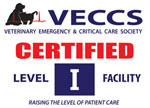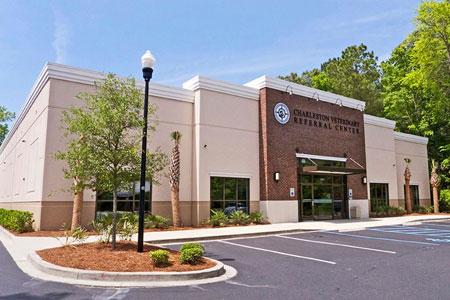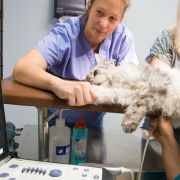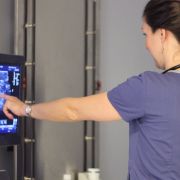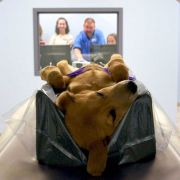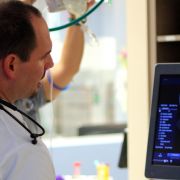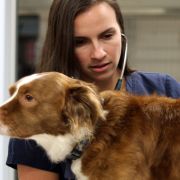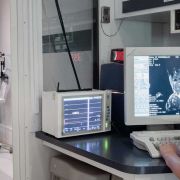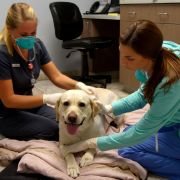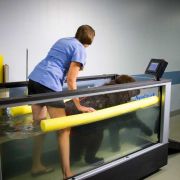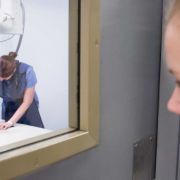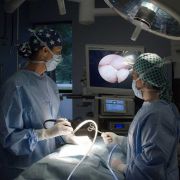Date:
By Sarah A. Moser - Veterinary Economics
Dr. Alan Green wanted the doctors, staff members, and clients to know where to find each and every veterinary service offered in his 16,345-square-foot hospital—without a map. So when the time came to build Charleston Veterinary Referral Center in Charleston, S.C., he wanted to get the traffic flow just right.
“Hallways are our enemy. I just hate walking into a practice and being confused as to where to go,” says Dr. Green, co-owner of the hospital.
The public zone of the clinic is built in a horseshoe shape, with 10 exam rooms looping the reception desk, check-in and check-out areas, and administrative office. This simple design helps clients navigate the not-so-small practice. And it helped the referral center win a 2012 Veterinary Economics Hospital Design Competition Merit Award.
The judges loved the separate check-in, check-out, and discharge areas and the improvement to traffic flow these features afford. When clients arrive, they check in at the front desk as usual. Behind the front desk sits a separate phone reception area and immediately behind that space is check-out. Across from check-out is a discharge alcove, a semi-private area that allows doctors or technicians to sit down with a client and review and discuss discharge information in an unhurried, relaxed atmosphere.
Another little touch that Dr. Green says makes his hospital special—and more convenient for clients—is a private part of the reception area. This space, just behind the triage room and steps from the reception desk, welcomes clients who need to get away for any reason.
“We have a lot of clients who drive a long way for chemotherapy appointments. This space gives them a quiet place to rest, work, or take a break away from the busier reception area,” he says. “Grieving clients also make use of this private space. This is one touch that’s really been a home run.”
To keep emergency traffic to a minimum, Dr. Green designed a triage exam room steps from the entryway. “We wanted to give clients a bit of privacy without having to walk all the way to the treatment area,” Dr. Green says. “We keep the room stocked for minor emergencies, and when we’re busy we staff a dedicated emergency technician in this room.”
This “ideal” floor plan came from Dr. Green’s experience as a private practitioner and an emergency/referral veterinarian; his partner, Dr. David Sachs; and the experience of his staff members, architect, and local contractor. Plus, Dr. Green’s wife, MJ, orchestrated the hospital’s interior and logo design.
“The collaboration made for an incredible outcome,” Dr. Green says. “The project was initiated summer 2010, construction began October 2010, and we opened our doors February 28, 2011.”
Before the team opened the doors, however, they enhanced communication in the clinic. Hollering across the room to get a staff member’s attention would not do in a 16,000-square-foot hospital.
To facilitate greater communication between referral doctors and general practitioners, they use a practitioner portal to update records. General practitioners log in to view their patients’ records as well as digital radiographs. The practice employs board-certified dental specialists who use digital radiography as a matter of course, and this technology allows them to do a better job of diagnosing, treating, and communicating results.
“Part of our mission is to make our practice feel like an extension of a doctor’s general practice,” Dr. Green says. “Of course, if you’re going to delve into technologies, it helps to have young, smart, tech savvy members on board.”
He gives all technology kudos to Dr. Sachs and team member Michael Parks, LVT. He says they spent hours researching practice software, practitioner portals, time-stamped census boards, and other systems to streamline practices.
The flow of communication also includes referral letters sent via fax the minute they’re written to referring doctors. A time-stamped census board helps Dr. Green and his team see where clients and patients spend their time—and allows them to make tweaks to their approach to adjust as needed. Visit dvm360.com/hdtech to learn more about this system.
Dr. Green says a great floor plan and high-quality technology help the best veterinary practitioners offer the best care to patients.



